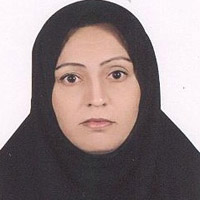Exploration of the Impacts of Curosurf at 100 and 200 mg/kg Doses in Neonates with Respiratory Distress Syndrome
Author(s):
Article Type:
Research/Original Article (دارای رتبه معتبر)
Abstract:
Background
The use of surfactants is still considered a cornerstone in the treatment of neonatal respiratory distress syndrome (RDS). This study aimed to compare two doses of Curosurf to determine the most effective dose of this medicine with the least side effects. The study was performed as a double-blind clinical trial in the Neonatal Intensive Care Unit of Valiasr Hospital in Birjand, Iran, from June to October 2021 on 51 neonates admitted with RDS.Methods
Neonates with RDS who met the inclusion criteria were randomly divided into two groups. Initially, they underwent nasal Continuous Positive Air Way Pressure (n-CPAP), and if failed, Curosurf was administered intratracheally at a dose of 100 or 200 mg/kg. The two groups were compared in the mean hospital stay, the need for supplemental oxygen, the need for n-CPAP, the start of complementary feeding after Curosurf injection, the relative frequency of the need for mechanical ventilation, and possible complications after the injection and re-injection of surfactant. Data were analyzed using the independent sample t-test, the Mann–Whitney U test, Chi-squared test, and Fisher’s exact test at a significance level of α=0.05.Results
The sample size was calculated based on the existing studies considering the days of the need for oxygen therapy in the two groups with different doses of surfactant (6.4±3.5 and 8.9±2.6 days) and according to the formula for comparing the means in the two groups with 95% confidence interval and 80% power. Accordingly, 24 neonates were assigned to each group. N=[z (1-α/2)+z (1-β)] (δ12+δ22)/ (µ1-µ2)2. Data were analyzed at a significant level of α=0.05. The findings indicated no significant difference between the two groups of neonates in the mean length of hospital stay, adjuvant oxygen requirement, n-CPAP requirement, time to oral feeding initiation from birth with breast milk (with breast or assistive devices) or formula, the relative frequency of the need for mechanical ventilation, and possible side effects after the injection and re-injection of surfactant.Conclusion
In conclusion, 100 and 200 mg/kg of Curosurf appear to have the same effects and outcomes in the treatment of neonatal RDS.Keywords:
Language:
English
Published:
Iranian Journal of Neonatology, Volume:13 Issue: 3, Summer 2022
Pages:
15 to 20
magiran.com/p2485812
دانلود و مطالعه متن این مقاله با یکی از روشهای زیر امکان پذیر است:
اشتراک شخصی
با عضویت و پرداخت آنلاین حق اشتراک یکساله به مبلغ 1,390,000ريال میتوانید 70 عنوان مطلب دانلود کنید!
اشتراک سازمانی
به کتابخانه دانشگاه یا محل کار خود پیشنهاد کنید تا اشتراک سازمانی این پایگاه را برای دسترسی نامحدود همه کاربران به متن مطالب تهیه نمایند!
توجه!
- حق عضویت دریافتی صرف حمایت از نشریات عضو و نگهداری، تکمیل و توسعه مگیران میشود.
- پرداخت حق اشتراک و دانلود مقالات اجازه بازنشر آن در سایر رسانههای چاپی و دیجیتال را به کاربر نمیدهد.
In order to view content subscription is required
Personal subscription
Subscribe magiran.com for 70 € euros via PayPal and download 70 articles during a year.
Organization subscription
Please contact us to subscribe your university or library for unlimited access!


